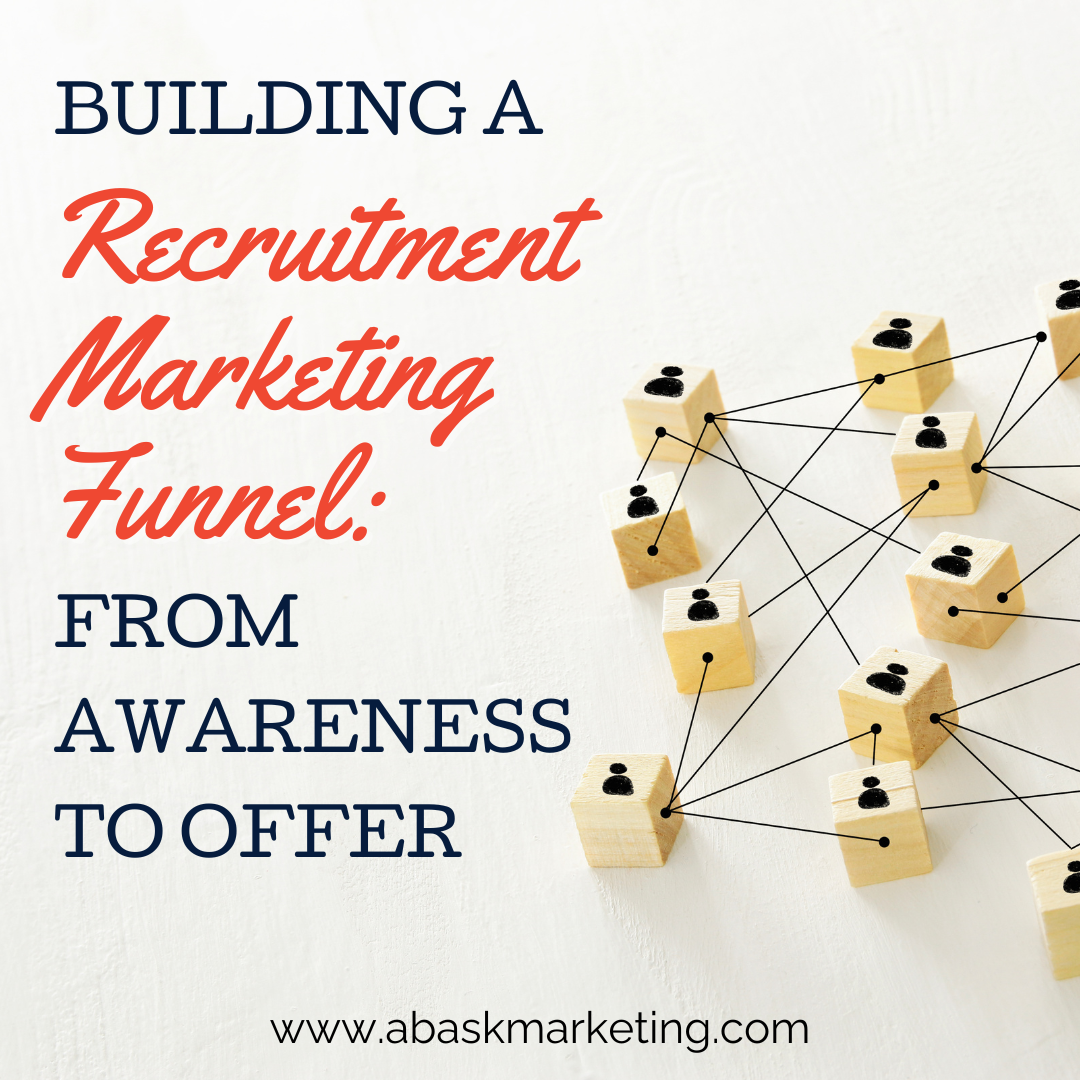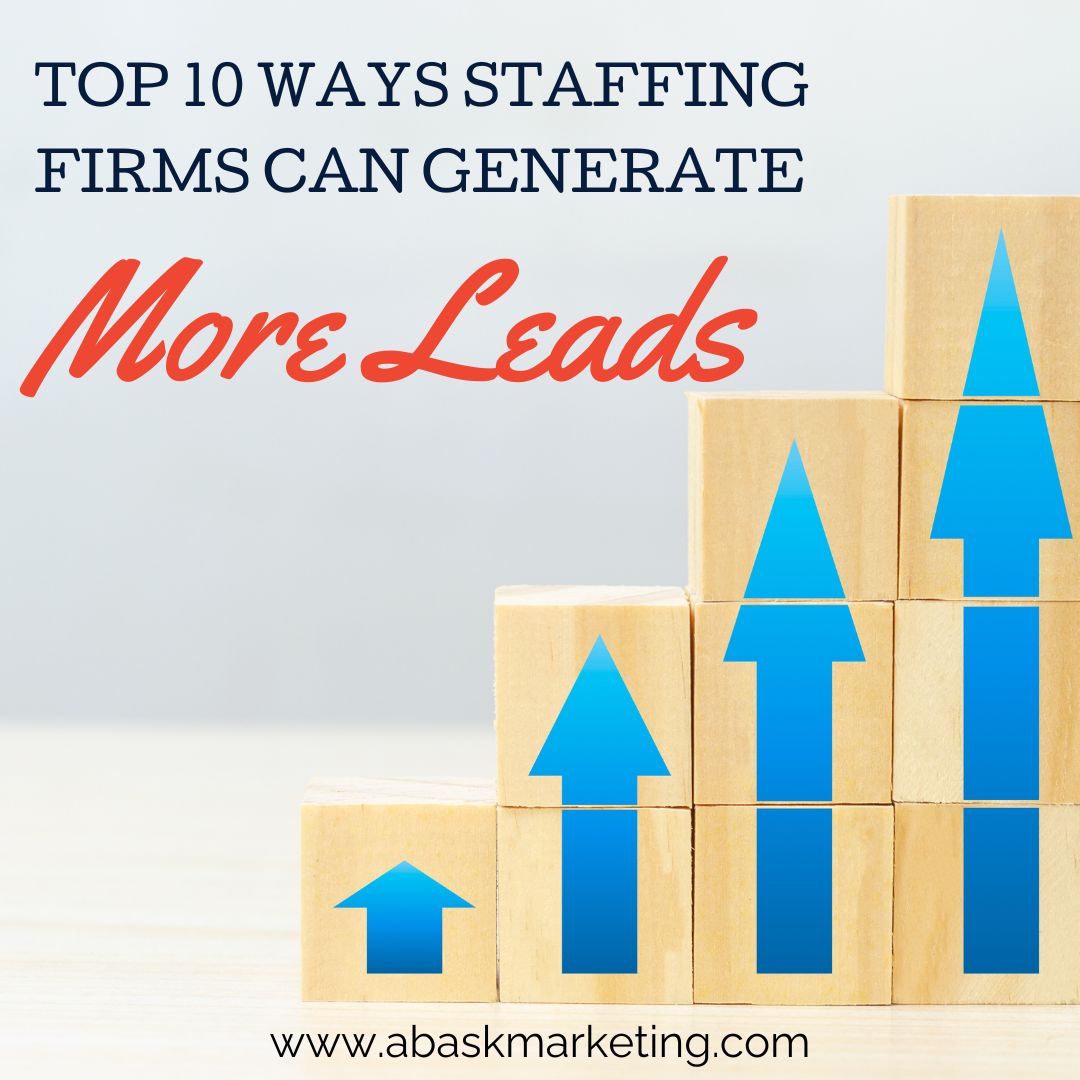Recruitment today is about much more than simply posting jobs and waiting for the right candidates to find them. The best talent isn’t just sitting around, waiting to find the perfect job—they’re actively being courted by multiple recruiters and employers. So, how do you stand out? This is where the recruitment marketing funnel shines.
At Abask Marketing, we help staffing companies craft these intricate funnels, ensuring a steady pipeline of qualified candidates while fostering strong employer brands. This process goes far beyond basic recruitment. It’s about strategically guiding potential candidates through a journey that takes them from initial awareness of your staffing agency to accepting a job offer. Here’s how to build a recruitment marketing funnel that moves talent smoothly through each stage and positions your agency as the go-to solution for both candidates and clients.
Stage 1: Awareness—Capturing the Attention of Your Ideal Candidates
The awareness stage is the top of the recruitment funnel, where potential candidates first learn about your staffing company or your clients’ open roles. At this point, your audience might not even know they are open to a new opportunity. Therefore, the goal is to capture their attention and position your agency as a trusted authority in the job market.
To build awareness, content marketing and social media play crucial roles. Think of blog posts about industry trends, engaging videos that highlight workplace culture, or even hosting webinars that explore career growth topics. Your messaging should speak directly to the kind of talent you are trying to attract. Whether you’re targeting healthcare professionals, IT experts, or yacht crew, tailor your content to address their pain points and career aspirations.
Learn more about using content marketing to attract passive candidates here!
Paid advertising can also give your awareness efforts a significant boost. Platforms like LinkedIn and Google Ads allow you to precisely target specific demographics and job titles. When crafted well, your ads can bring your staffing firm to the forefront of candidates’ minds, helping you build a talent pool long before you need to fill positions.
Stage 2: Interest—Building Relationships With Targeted Candidates
Once you’ve captured a candidate’s attention, it’s time to cultivate their interest. This is the stage where candidates start to engage more deeply with your content and offerings. Now, the focus shifts to building a relationship based on trust and mutual interest.
In this stage, providing personalized content is key. This could be sending them an email with tailored job alerts, offering free career consultations, or even giving them access to exclusive industry reports and white papers. The objective is to keep them engaged by positioning your staffing agency as the go-to resource for career advice and job placements in their field.
Still, candidates may not be ready to apply for a position yet, so it’s important not to rush them. Instead, focus on providing value that aligns with their career goals. Highlight your clients’ company cultures, growth opportunities, and any benefits that make the job opportunities you represent stand out. A strong recruitment CRM tool can help track candidate interactions and deliver personalized follow-ups, ensuring that no promising lead falls through the cracks.
Stage 3: Consideration—Converting Passive Candidates Into Active Applicants
By the time candidates enter the consideration stage, they are seriously weighing their options. Perhaps they’ve explored job boards, read your case studies or success stories, and now they’re deciding whether to engage further with your staffing company or apply for a specific role.
Here, the candidate experience must be seamless. Candidates will likely compare you to other staffing firms; a clunky application process can turn them away. Ensure your job application systems are optimized for mobile devices, as more and more candidates are scrolling via smartphones. Simplify the application process to reduce friction—shorten forms, minimize redundant questions, and allow for easy uploads of resumes and LinkedIn profiles.
At this stage, transparency is key. Candidates want to know the salary range, benefits, and potential for growth before they commit to applying. Clear and concise job descriptions can significantly increase application rates. Furthermore, engaging with candidates through informative emails, one-on-one conversations, or virtual career fairs can provide that final push to turn passive candidates into active applicants.
Stage 4: Decision—Presenting the Offer and Closing the Deal
The decision stage is the final hurdle in the recruitment funnel, where candidates are offered the job or move on to other opportunities. For staffing companies, this stage is critical, as all the previous effort hinges on delivering a compelling offer.
At this point, it’s important to focus on creating a positive interview experience for the candidate. This includes prompt and transparent communication about the interview process, feedback on their performance, and any next steps. Whether you’re hiring for your clients or filling internal roles, the candidate experience can make or break your chances of securing top talent.
Once the decision is made, a strong offer that reflects the candidate’s expectations is crucial. This includes not just salary, but benefits, work-life balance, and career growth opportunities. Timing is also essential. Offering too late may result in the candidate accepting a competing offer, so be sure to streamline internal processes to ensure swift decisions.
In some cases, candidates might have reservations or competing offers. Having open, honest discussions about their concerns can help you negotiate and close the deal. Emphasize the unique aspects of the position and the company’s culture to reinforce why this is the right opportunity for them.
Measuring and Optimizing Your Recruitment Funnel
A recruitment marketing funnel is not static. It requires constant measurement and optimization to ensure it continues delivering results. Using analytics tools, staffing companies can track the performance of each stage of the funnel—from ad impressions and content downloads to interview completions and offer acceptances.
Regularly review these metrics to identify any weak points. For example, if many candidates drop off at the consideration stage, perhaps your job descriptions need more clarity or your application process needs to be streamlined. Similarly, if few candidates are accepting offers, it might be worth revisiting compensation packages or improving post-offer engagement.
By keeping your recruitment marketing funnel agile and data-driven, you can continuously refine your approach, ensuring that it remains effective at attracting and converting top talent.
Ready to Build Your Recruitment Funnel?
At Abask Marketing, we specialize in helping staffing companies build powerful recruitment marketing funnels that attract and retain the best talent. If you’re ready to take your recruitment efforts to the next level, schedule a free consultation with us today and let’s get started!






0 Comments